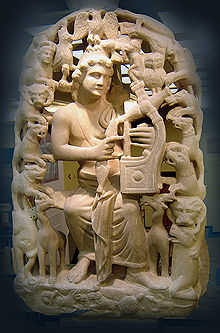Greek Folk Dancing
| Music of Greece | |
|---|---|
 |
|
| General topics | |
| Genres | |
| Specific forms | |
| Media and performance | |
| Music awards |
|
| Music charts | |
| Music festivals | |
| Music media |
|
| Nationalistic and patriotic songs | |
| National anthem | "Hymn to Liberty" |
| Regional music | |
| Related areas | Cyprus, Pontus, Constantinople, South Italy |
| Regional styles |
|
Greek dance (horos) is a very old tradition, being referred to by authors such as Plato, Aristotle, Plutarch and Lucian. There are different styles and interpretations from all of the islands and surrounding mainland areas. Each region formed its own choreography and style to fit in with their own ways. For example, island dances have more of a different smooth flow to them, while Pontic dancing closer to Black Sea, is very sharp. There are over 10000 traditional dances that come from all regions of Greece. There are also pan-Hellenic dances, which have been adopted throughout the Greek world. These include the syrtos, kalamatianos, pyrrhichios, hasapiko and sirtaki.
Traditional Greek dancing has a primarily social function. It brings the community together at key points of the year, such as Easter, the grape harvest or patronal festivals; and at key points in the lives of individuals and families, such as weddings. For this reason, tradition frequently dictates a strict order in the arrangement of the dancers, for example, by age. Visitors tempted to join in a celebration should be careful not to violate these arrangements, in which the prestige of the individual villagers may be embodied.
Greek dances are usually performed in diaspora Greek communities, and among international folk dance groups.
−
The Aegean islands have dances which are fast in pace and light and jumpy. Many of these dances, however, are couples dances, and not so much in lines. See Nisiotika for more information.
These dances are light and jumpy, and extremely cardiovascular.
Epirote dances are the most slow and heavy in all of Greece. Great balance is required in order to perform these dances.
The dances of the Peloponnese are very simple and heavy, with the leader of the line improvising.
Dances in Macedonia vary. Most are solid and are performed using heavy steps, whilst others are fast and agile. Most dances begin slow and increase in speed.
...
Wikipedia
